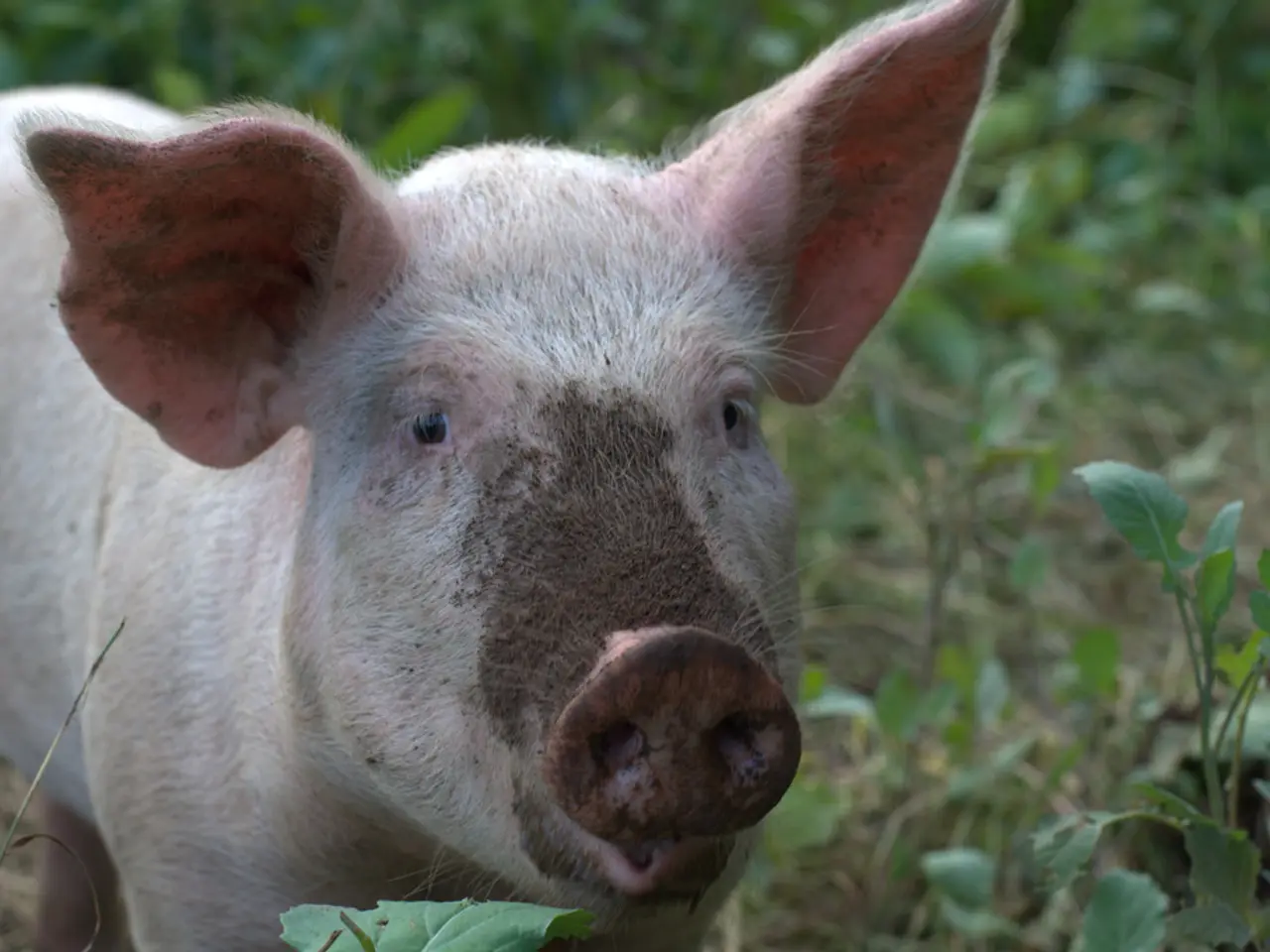Wild pigs in California discovered sporting vibrant blue skin; authorities advise public to stay vigilant
The California Department of Fish and Wildlife (CDFW) has issued advisories after wild pigs in Monterey County were found with blue-colored muscle and fat, indicating exposure to the rodenticide diphacinone. This contamination is believed to occur as wild pigs ingest bait meant for rodents, which often contains brightly colored dye (blue) as a toxicity marker.
The strange pigs' flesh and fat are bright, almost neon blue. This phenomenon was first brought to the attention of the CDFW in March this year. Consuming such contaminated meat is strongly discouraged because the rodenticide poses health risks.
Hunters are advised to inspect meat for blue coloration in fat or muscle tissue. Blue-colored tissue is a warning sign of contamination and those animals should not be consumed. Anyone who observes game animals with blue tissue is encouraged to report it to the agency for investigation.
Rodenticides like diphacinone cause internal bleeding and are hazardous to humans and non-target wildlife if ingested through contaminated game meat. No specific legal bans on hunting in Monterey County have been issued, but hunters need to be aware of these risks and monitor for contamination as part of responsible harvesting practices.
Pesticide applicators are urged to avoid bait placement in areas where wildlife frequent to reduce unintended exposure. The CDFW encourages farmers to use appropriate bait stations and application methods that exclude access to non-target species to help prevent non-target animals from consuming pesticides.
The CDFW promotes an integrated pest management approach for rodent control to help reduce the opportunities for rodenticide exposure for non-target wildlife. Wildlife can be inadvertently exposed to rodenticides by eating rodenticide bait or by eating other animals that have ingested rodenticides.
The poison in question, diphacinone, is an anticoagulant that works by binding to enzymes that recycle vitamin K, impairing the blood’s ability to clot. Death from rodenticide exposure tends to occur several days after initial ingestion, making the dying animal more vulnerable to predators.
The CDFW is investigating the situation and closely monitoring it. They advise extra vigilance in potentially risky locations to prevent rodenticide exposure for non-target wildlife. The CDFW has reported that 10 out of 120 (8.3 percent) wild pig samples taken from across California in a 2018 study contained rodenticide residue.
In summary, while there are no special prohibitions explicitly banning hunting and consuming wild pigs in Monterey County, due to the recent rodenticide contamination causing blue-tinted meat, hunters should exercise caution, avoid consuming affected meat, and report sightings of contaminated animals to authorities. The CDFW is urging trappers to report any unusual findings, especially those that contain blue flesh, but notes that not all animals exposed to the poison will exhibit the blue color.
Hunters should be aware of the risks associated with consuming wild pigs in Monterey County, as contaminated meat can pose health risks due to exposure to the rodenticide diphacinone. If meat presents blue coloration in fat or muscle tissue, it is a warning sign of contamination and should not be consumed.
The California Department of Fish and Wildlife (CDFW) is investigating the ongoing situation and has reported that 8.3 percent of wild pig samples taken from across California in a 2018 study contained rodenticide residue.
The anticoagulant poison diphacinone, responsible for the blue-tinted meat, works by binding to enzymes that recycle vitamin K, impairing the blood’s ability to clot. This can lead to internal bleeding, making the affected animal more vulnerable to predators.
Pesticide applicators are urged to avoid bait placement in areas where wildlife frequent to reduce unintended exposure. The CDFW promotes an integrated pest management approach for rodent control to help reduce opportunities for rodenticide exposure for non-target wildlife, ensuring a healthier environment and mental well-being for all.




